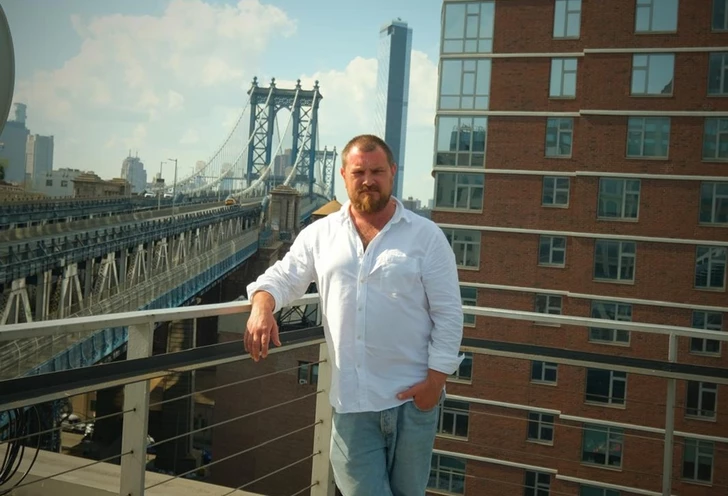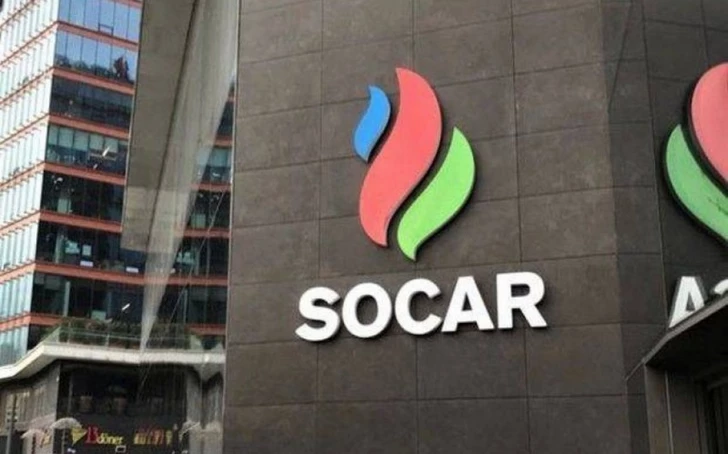NEW YORK, July 21, 2025 — Azerbaijani architect Zaur Gurbanaliyev, a decorated member of the Union of Architects of Azerbaijan and a recipient of the “Progress” medal, now lives and works in New York City. In this exclusive interview with Media.Az, he opens up about his unexpected move to the U.S., adapting to life and architecture in America, and his visionary proposal to revive the submerged Sabail Castle in the Caspian Sea.

– Zaur, your move to the U.S. seems unplanned. How did it happen?
– You’re right — it wasn’t something I had in mind. In December 2019, my family and I took a holiday trip to New York. We knew people here, so settling in for a short visit was easy. One evening at dinner, I met an immigration lawyer — also Azerbaijani — who encouraged me to apply for a green card based on my professional merits. He believed I met the criteria for the “exceptional professionals” category.
Then came COVID. The process froze. But fortunately, our application had just made it through in February 2020. That’s how my wife Saida, our sons Emil and Jamil, and I eventually relocated to the U.S.

– And how did your American architectural career begin?
–I received my green card in 2021 and immediately started job hunting. I landed an interview with Scarano Architect, a well-known Brooklyn firm led by Robert Scarano. I prepared extensively — studied his work, learned some key phrases in English.
But when I showed up, Robert didn’t even ask for my résumé. He had already researched me online. After a short conversation, he offered me the job. I started as a junior architect and, within six months, I was managing projects directly.

– What differences did you notice between architecture in Azerbaijan and the U.S.?
– The design thinking is 90% similar. What’s different is the technical documentation and building materials. For instance, in the U.S., especially for low-rise buildings, they use timber framing — a wooden frame, drywall, and siding over a concrete base. That was new for me; at first, it felt flimsy compared to our methods back home.
Adapting to local codes took time. But the biggest challenge was language. Architecture has universal visuals, but understanding regulations and communicating with clients required solid English. Tools like ChatGPT really helped in those early days.
– And how has the licensing process been?
– Long, but fair. The U.S. has a strict system. You accumulate work hours in specific categories before you’re allowed to sit for exams. It typically takes 3–5 years. In my case, some of my education and experience from Azerbaijan were recognized, and I recently became eligible to start the exams. There are five of them, each lasting several hours. I’m studying now and hope to finish within the next two years.
– Let’s talk about your project — the revival of Sabail Castle. What makes it unique?
– Sabail Castle is a 13th-century monument in Baku Bay. It’s partially submerged today. Rather than rebuild it physically, our team — architects Farid Akmeev, Nani Zhgenti, Ramil Akmeev, and I — propose creating a “living” monument.
We plan to install a transparent geodesic dome over the ruins and use 3D holographic projections to visually narrate the castle’s history — its construction, use, decline, and transformation. Visitors would see centuries of history come to life without altering the ruins themselves.

– What else does the concept include?
– We envision a broader tourism cluster — a 12-meter-wide dam that would allow for safe access to the site, shops, restaurants, and cultural venues. Archaeological work could be observed in real time, and later even reenacted for tourists. The goal is to turn this into a sustainable cultural destination.
Right now is a perfect time. The Caspian Sea is at a historic low, making construction logistically easier. That’s a rare opportunity — maybe once in a hundred years.

– Why not restore the castle completely?
– Because choosing one historical version of the structure would be controversial. Sabail Castle went through many phases — Zoroastrian, Islamic, even Roman influences. Instead of restoring it physically, we’re offering an immersive digital retelling — a monument that tells its own story without erasing its ruins.
– How was the integration into American professional life?
– Surprisingly smooth. My colleagues were welcoming. My accent never bothered them — they adapted quickly. I brought a certain warmth, maybe a bit of that Azerbaijani spirit. My boss once told me, “You’re the glue that holds the team together.”
One touching moment was when I noticed an American flag left on the ground during renovations at our office. I quietly mounted it in my office. It meant a lot to me — respecting the flag of the country I now live in. My boss was moved and thanked me personally.
– Do you feel at home in New York?
– Yes, it’s a melting pot. You hear Azerbaijani, Turkish, Russian on the streets. I’ve built friendships, both personal and professional. One of my closest friends here is Peter Stratigakis, a Greek-American entrepreneur. We connected over stories of military service and cultural heritage.
– Final thoughts?
– I owe much of who I am to my mentors in Azerbaijan — Vadim Akimovich Kogan, Davud Aga Akhundov, Elbay Kasimzade, and others. Their knowledge stays with me to this day.
My journey from Baku to New York wasn’t planned, but it’s been deeply meaningful. And now, through this project, I hope to give something back — by helping revive a part of Azerbaijan’s heritage in a way that looks forward, not just back.










